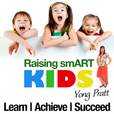
Summary: In previous blog posts and podcasts, we've briefly explored Howard Gardner's Theory of Multiple Intelligences (MI) In short, there are 8 distinct types of intelligences and every individual has varying strengths and weaknesses amongst them. Before diving right into to the 8 MI's, here's a video of Howard Gardner speaking about MI. The 8 Multiple Intelligences #1. Visual-Spatial - Think in terms of physical space and see in pictures such architects, visual artists, and sailors. They have a keen awareness of their environments and enjoy drawing, jigsaw puzzles, reading maps, and even daydreaming. Best ways to teach visual-spatial learners: drawings, verbal and physical imagery. #2. Bodily-kinesthetic - Relate to the world through movement (dancer, actors, sports stars, or surgeons). Best ways to teach bodily-kinesthetic learners: physical activity, hands-on learning, acting out, role playing. #3. Musical - Sensitive to rhythm and sound in music and their environment. Best ways to teach musical learners: turn lessons into lyrics, speaking rhythmically, tapping out time, listening to music while studying #4. Interpersonal - the social butterflies - understand and interact well with others. Best ways to teach interpersonal learners: group activities, seminars, dialogues. #5. Intrapersonal - They are the most independent of the learners. Keen understanding of one's own interests, feelings, and goals and tend to shy away from others. Strong-willed, confident, and opinionated. Best ways to teach intrapersonal learners: independent study, books, creative materials, diaries, privacy, and time. #6. Linguistic - Highly developed auditory skills, often think in words and use words effectively. They like reading, playing word games, making up poetry or stories. Best ways to teach a linguistic learner: say and see words, read books together, record creations, play word game, write stories or poems #7. Logical -Mathematical - Conceptual and abstract thinkers that use reasoning to guide their discoveries. Think scientists, mathematicians, investigators Best ways to teach a logical-mathematic learner: logic games, investigations, mysteries. #8 Naturalistic Intelligence - This is the ability to recognize and appreciate our relationship with the natural world. Example professions: Astronomers, biologists, and zoologists Best ways to teach a naturalistic learner - get out into nature and explore, classify discoveries Learning (and testing) in schools Schools and tests generally only focus on two types of intelligences, verbal-linguistic and logical-mathematical. If these are not the dominant intelligence a child possesses, s/he could be labeled average or below average. What a tragedy! Next Steps As a parent, it's important to understand the dominant intelligences of your child. You can then foster the development of those intelligences for the benefit of your child. For example, if your child is a naturalistic learner, the simple act of changing your child's study environment from inside to out may make all the difference. I challenge you to observe and assess your child's (and yours) dominant learning styles this week. Think about their performance in school and whether there are any struggles. Even if your child does well in school, you can find ways for your child to engage more thoroughly and enjoy the learning process more by understanding and fostering his/her learning strengths. Until next week, enjoy the journey of discovering more about multiple intelligences.
